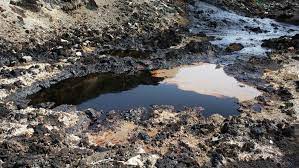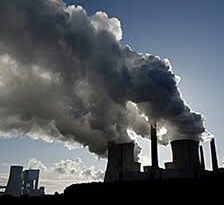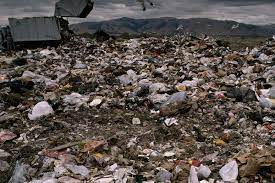Heavy Metal Contamination in Soil
With the development of the global economy, both type and content of heavy metals in the soil caused by human activities have gradually increased in recent years resulting in serious environmental deterioration (Su etal., 2014).
Fertilizers, pesticides and mulch are important agricultural inputs for agricultural production. However, their long-term cum excessive application has resulted in the heavy metal contamination of soils and groundwater. Heavy metals are the most reported pollutants in fertilizers.
Heavy metal content is relatively low in nitrogen and potash fertilizers, while phosphoric fertilizers usually contain considerable toxic heavy metals. Heavy metals in the compound fertilizers are mainly from master materials and manufacturing processes.
Heavy Meta ls Contamination in Soil
Sources of soil contamination can occur through industrial wastewater, sewage water used for irrigation, quarrying sites and through hazardous waste disposal on the soil (Ojo, 2017). According to Gebreyesus (2014), low concentration of these metals can interact with the soil to cause nutrient deficiency.
These heavy metals can affect soil matrices, and hence metal transport. Heavy metal contamination of urban and agricultural soils can result from mining, manufacturing, and the use of synthetic products (e.g. pesticides, paints, batteries, industrial waste and land application of industrial or domestic sludge (Ojo, 2017).
Read Also : Soil Fumigation, Importance and Types of Fumigation
Contaminated soils may occur at fields that had past applications of waste water or municipal sludge, areas in or around mining waste piles and tailings, industrial areas where chemicals may have been dumped on the ground and so on.
The presence of toxic metals in soil can severely inhibit the biodegradation of organic contaminants (Maslin and Maier, 2000). Erosion, bush burning and oil spillage which are land degradation forms can affect distribution of heavy metals (Oghenero, 2012).
Ayodele etal. (2014) reported heavy metals contamination of soil and plant samples taken from an abandoned granite quarry in Ekiti State. Other sources of soil contamination include hazardous waste disposal sites, waste incinerators and ash dumps.
The factors affecting the bioavailability and occurrence of metals in soil include soil pH, cation exchange capacity, organic matter content, soil and interaction among the target elements (Jung, 2008).
Remediation of Heavy Metal Contaminated Soils
1. Engineering remediation
Engineering remediation is the use of physical or chemical methods to control heavy metal contamination of soils.
Replacement of contaminated soil, soil removal and soil isolation.
Replacement of contaminated soil implies adding large amount of clean soil to cover on the surface of the contaminated soil or to blend with the latter.
Soil removal is the removal of contaminated soil and its subsequent renewal with the clean soil, which is necessary for the seriously contaminated soil with little area.
Soil isolation means isolating the contaminated soil from the uncontaminated soil, but to completely remedy it still needs other auxiliary engineering measures (Zheng etal., 2002).
All of the foregoing methods will cost large amount of manpower and material resources, so they can only be applied to small area of soils (Su etal., 2014).
2. Electro kineticremediation
Soil electrokinetic remediation is a new economically effective technology in which the DC-voltage is applied to form the electric field gradient on both sides of the electrolytic tank containing the contaminated soil; contaminants in the soil are taken to the processing chamber located at the two polar sides of electrolytic cell, through the way of electro-migration, electric seepage or electrophoresis, and thus reduce the contamination. The method performs well in the soil with low permeability (Hanson etal., 1992).
3. Soil leaching
The principle of soil leaching is to wash the heavy metal contaminated soil with specific reagents and thus remove the heavy metal complex and soluble ions adsorbed on the solid phase particles.
By using this method, heavy metals are separated from the soil, and are then recycled from extracting solution (Su etal., 2014).
4. Adsorption
Adsorption method is based on the fact that almost all heavy metal ions can be fixed and adsorbed by clay mineral (bentonite, zeolite, furnace slag, etc (Wang and Zhou, 2004).
5. Other methods
Other engineering methods include washing and compounding, heat treatment, physical solidification, chemical improvers, chemical curing lamp remediation, etc. (Su etal., 2014).
Phytoremediation
This is achieved by growing specific plants in the soil contaminated by heavy metals. These plants have certain hyper-accumulation ability for the contaminants in the soil (accumulated mainly in the root or above the root).
When the plants are ripe or reach certain enrichment level of heavy metals, remove heavy metals in the contaminated soil layer thoroughly by harvesting, burning and curing plants. Using plants and their coexisting microbial system to remove heavy metals is a new technology.
This method is based on the principle of finding the suitable plants with strong ability for heavy metal accumulation and tolerance. Over 400 species of such plants have been found in the world, and most of them belong to Cruciferae, including the genus Brassica, Alyssums, and Thlaspi (Xin etal., 2003).
Microbial remediation
Microbial remediation is the use of some microorganisms to perform the absorption, precipitation, oxidation and reduction of heavy metals in the soil.
Read Also : Roles of Producers and Corporations in Waste Management
It has been established that fungi could secrete amino acids, organic acids and other metabolites to dissolve heavy metals and the mineral containing heavy metals (Siegel et al., 1986).
Fred et al. (2001) reported that the fungi, Gomusintraradices, may improve the tolerance and absorption of sunflower to Cr.
Animal remediation
Some animals living in the soil (maggots, earthworms, etc) can take heavy metals in the soil. Wang etal. (2007) proved that when the concentration of Cu was low in the soil, the activities and secretion of earthworms could promote the absorption of Cu by ryegrass.
In conclusion, the heavy metals concentration in the environment should be monitored to prevent hazards to human beings and animals.
This can be achieved through proper discharge of environmental pollutants to the environment from the industry, through proper examination of soil for heavy metal contamination before planting crops in soil with sewage water for irrigation, or area near industrial waste discharge.
There should be involvement of environmental protection agency in proper monitoring of heavy metal contamination in the environment.
Sources of soil contamination can occur through industrial wastewater, sewage water used for irrigation, quarrying sites and through hazardous waste disposal on the soil;
Engineering remediation is the use of physical or chemical methods to control heavy metal contamination of soils; Some specific plants, microorganisms and animals can be used to reduce heavy metals contamination in the soil.



